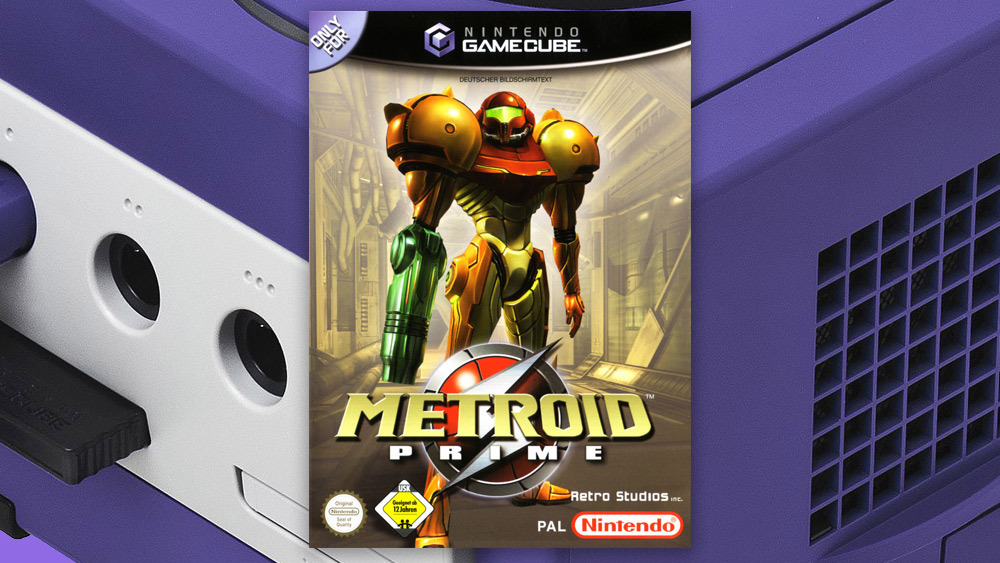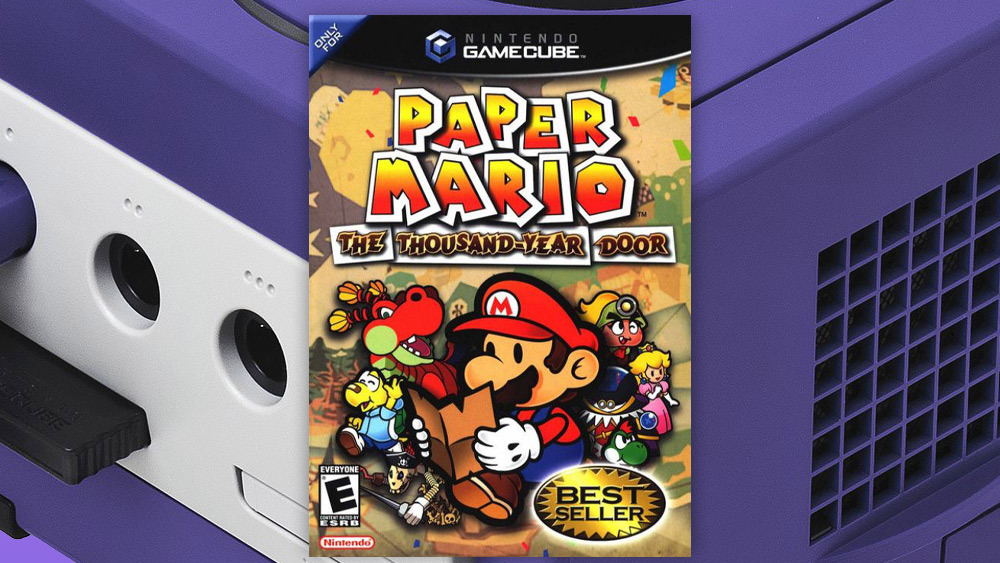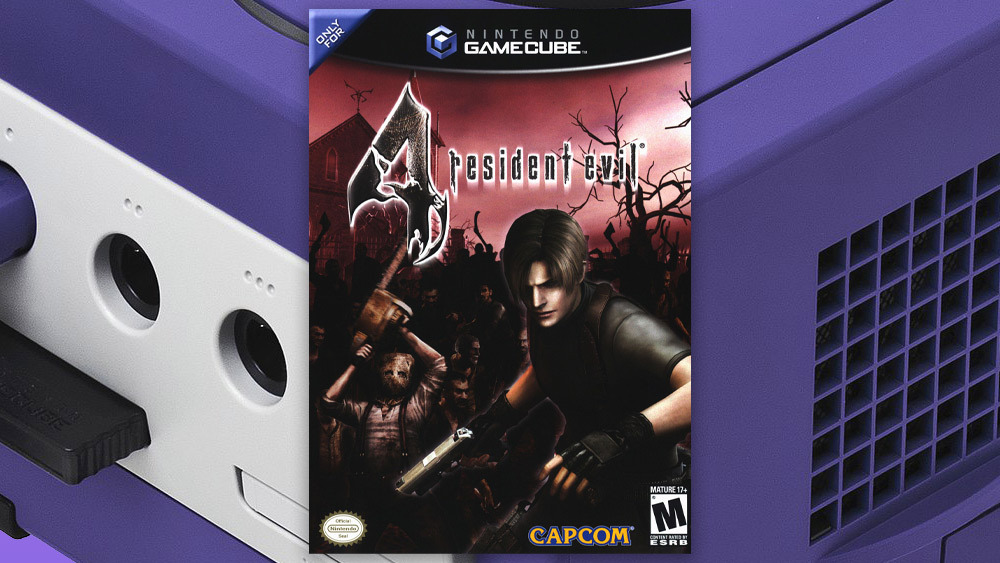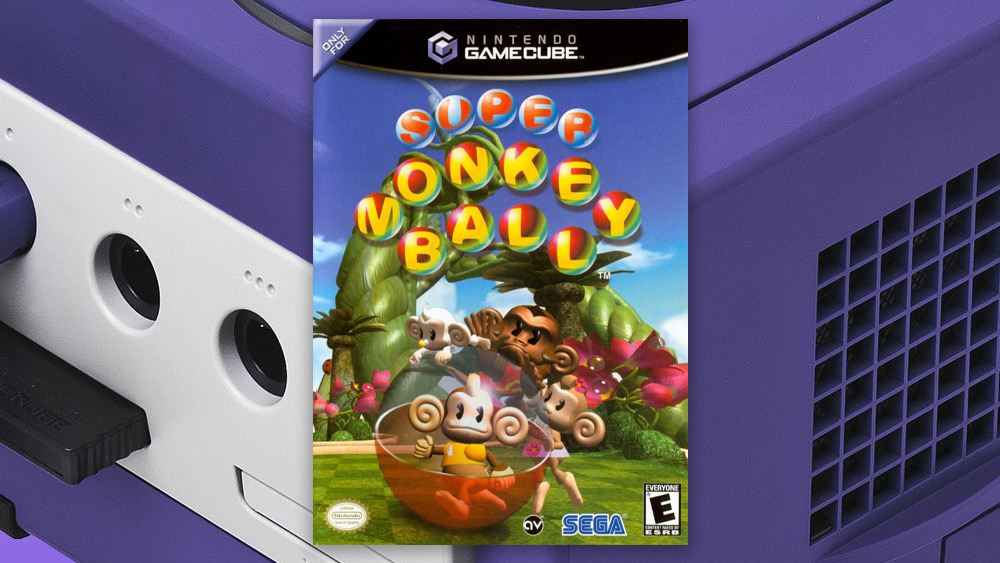10 Best GameCube Games Of All Time
The GameCube looked like a lunch box and even had a handle, but it was home to plenty of great (delicious) games.
The Nintendo GameCube has a memorable design. The cube-shaped form factor coupled with a carrying handle made it surprisingly portable and pretty darn cute. It was also Nintendo's first console with an optical drive, but Nintendo being Nintendo, it bucked the norm in favor of smaller discs. The GameCube also had a curious controller design thanks to its oddly placed face buttons and mismatched sticks. The GameCube was different than any other console on the market, but it had something very much in common with previous Nintendo consoles: a stellar library of games. Over the course of its six-year lifespan, the GameCube amassed a library of 650+ games. From first-party hits from iconic Nintendo franchises to a more robust third-party lineup than its most recent predecessor, the GameCube was home to some of Nintendo's absolute best games. We've rounded up our picks for the 10 best GameCube games below (in alphabetical order).
More Nintendo best lists
Fire Emblem: Path of Radiance

Long before the Fire Emblem franchise took a huge gamble on the Nintendo 3DS to determine its fate and was granted a new awakening, it was making a name for itself in Japan and largely shunning the idea of a Western release. That changed after Super Smash Bros. Melee was released, and in 2005 we got Fire Emblem: Path of Radiance, building on the localization efforts set by Fire Emblem and Fire Emblem: The Sacred Stones. All the signature tactical action of the franchise was polished to a new level, bringing with it an addictive layer of turn-based strategy, challenging maps, and the infamous permadeath system that could undo hours of hard work when a beloved comrade fell in battle.
With full-motion videos, a rich story, and a ton of stats to factor into every battle, Fire Emblem: Path of Radiance was a strategy game that was well worth investing time in, creating an unforgettable and mature experience on Nintendo's colorful console.
See our Fire Emblem: Path of Radiance review.
Ikaruga

Shoot-'em-up games have typically held niche appeal over the years, but Ikaruga' s approach to the genre was a visual feast for the eyes when it was first released. Combining the trademark bullet hell action of its genre with a novel approach to clearing the screen of waves of relentless enemies, Ikaruga was an absolute blast to play then. What made the game a memorable classic though, was its visual flair that turned it into a vertical-scrolling masterclass of graphics and intensity.
With a merciless attitude for anyone brave enough to take a run at it, Ikaruga eventually got a second shot at life on later consoles. Receiving a mixed reception when it first launched, the march of time revealed that Ikaruga was simply ahead of its time and today it's widely regarded as not only a work of art, but one of the greatest shoot-'em-ups of all time and a major influence on acclaimed mainstream titles like Nier.
See our Ikaruga review.
Mario Kart: Double Dash

Mario Kart: Double Dash played it safe when it hit the racetrack in 2003, iterating on Mario Kart 64 and Super Circuit's ideas with a number of terrific technical improvements. New weapons would make you curse the AI if you were on the receiving end of them, the courses were wilder than ever, and the vehicles on offer were staggering to say the least. But where the game truly made a name for itself was in the multiplayer department, thanks to a creative setup that allowed two players to control a single kart.
With driving and offense split between them, that specialization created a surprisingly tactical experience that either reinforced bonds between friends or was single-handedly responsible for breaking up long-standing friendships, but the concept has survived as one of the most original concepts in the entire Mario Kart franchise, and one that was never repeated again. A good-looking and brilliantly executed example of Nintendo innovation, Mario Kart: Double Dash had some of the finest multiplayer mayhem on offer for anyone willing to risk letting their friends take the wheel.
See our Mario kart: Double Dash review.
Metroid Prime

Looking back at the troubled development history of Metroid Prime, it's amazing to see that not only was the game finished with incredible odds stacked against it, it basically rewrote the entire franchise. Jumping from the second dimension of platforming and straight into first-person action territory, Samus Aran's latest adventure was the game to have running on your GameCube if you wanted to show it off. A visual showcase of exotic level design, gripping boss fights, and head-scratching puzzles, Metroid Prime revitalized the series and would be followed up by two excellent sequels, creating what is arguably one of the best trilogies in video game history.
Whatever developer Retro Studios has planned next for Samus Aran in Metroid Prime 4, it'll have some big Varia Suit boots to fill when it does eventually arrive as this Metroid masterpiece still holds up brilliantly two decades later.
See our Metroid Prime review.
Paper Mario: The Thousand-Year Door

The GameCube had no shortage of charm thanks to its quirky selection of games, but you'd be hard-pressed to find a game more instantly adorable than Paper Mario: The Thousand-Year Door. Nintendo took the idea of a more two-dimensional Mario in wild new directions, using the paper medium to deliver outlandish scenarios and imaginative environments that required some innovative thinking to explore.
That level of creativity made the game unique for its time, while its gentle learning curve hid a surprisingly deep combat system that kept it constantly interesting. Charming and hilarious in equal measure, this was one Mario adventure that wore its papercraft heart on its sleeve.
See our Paper Mario: The Thousand-Year Door review.
Pikmin 2

The debut Pikmin game didn't exactly make a terrific first impression, as its beloved cast of cute critters were shackled by strange gameplay decisions and an annoying time limit. Pikmin 2 on the other hand, broke free from those constraints and expanded on its ideas, creating an adventure that was imaginative, enjoyable, and cleverly added new features to its formula. New Pikmin entered the scene, an extra captain was capable of guiding the helpful natives, and each level was an intelligent step forward that could be solved in a number of ways. As a lesson in how to make a great sequel, Pikmin 2 is an absolute joy that made owning a GameCube worthwhile.
See our Pikmin 2 review.
Resident Evil 4

A GameCube exclusive until it wasn't, Resident Evil 4 was the biggest evolution yet for a series that had largely remained stuck in Racoon City for far too many years. Gone was the metropolitan maze of zombie-infested streets, replaced instead with a European village crawling with a new generation of infected nastiness. What made Resident Evil so special at the time was its balance of suspense, puzzles, and action, as Leon Kennedy used every single bullet in an arsenal big enough to level a city.
At its best, Resident Evil 4 was a cinematic spin on the series that would spike your heart-rate up and leave you drenched with sweat from the adrenaline ride that it took you on, setting a benchmark for the franchise that future games would build off of. Regarded as one of the all-time best entries in Resident Evil history, for a time Nintendo had a monopoly on Capcom's undead golden goose, much to the chagrin of anyone who didn't own a GameCube yet.
See our Resident Evil 4 review.
Super Monkey Ball

Here we had a monkey stuck inside of a ball, rolling it around in a neverending mission to score all the bananas on a level that was a combination of maze-like genius and treacherous pitfalls. The big catch here? Instead of controlling the momentum of an adorable ape, you changed the world around it and tilted the level. If your monkey made it to the end, you'd win the stage, but that was easier said than done.
You couldn't ask for a better launch title on the GameCube, especially with a game that had already nailed its core gameplay concepts and was simply excellent at translating those ideas into addictive ape-spinning action. It was silly, but Super Monkey Ball was also an example of the stars aligning with the right studio to deliver goofy fun on the GameCube.
See our Super Monkey Ball review.
Super Smash Bros. Melee

Video games come and go, but perhaps the most enduring legacy of Super Smash Bros. Melee is that years after release, it still has a die-hard community of fans who regularly gather to pummel each other senseless at tournaments. Taking Nintendo's most iconic characters and throwing them into a winner take all brawl for bragging rights on perfectly-designed stages was already a winning recipe, but the game went a step further with its gameplay, which was fun to learn and deviously-challenging to master.
With a memorable adventure mode, quirky attacks, and rewarding content, Super Smash Bros. Melee still remains the definitive entry in a series of pitch-perfect death-match action.
See our Super Smash Bros. Melee review.
The Legend of Zelda: The Wind Waker

After the Ocarina of Time and Majora's Mask on the N64, Zelda fans were ready for another grim and mature return to Hyrule on the GameCube. The expectations had been set with a technical demo at E3, but what fans got was a tonally-different adventure that still stands as one of the best in the series. Gone was the focus on a realistically-rendered hero in green, as Link now sported a more cartoonish aesthetic and explored a world that was brighter and more optimistic than ever before.
Anyone complaining about the Saturday morning cartoon visuals missed out on a game that is visually timeless, contains a world that is a joy to explore, and signature action that carried the franchise flag proudly. An HD port of the game on the Wii U remedied many of the more annoying issues in the game, and with a re-release of Skyward Sword on the Nintendo Switch, it's high time that Link's vibrant adventure got a chance to set sail on an even newer Nintendo platform.
See our The Legend of Zelda: The Wind Waker review.
GameSpot Best Lists and Recommendations
- The Best Nintendo Switch Games
- The Best Xbox Series X Games To Play Right Now
- The Best PS5 Games So Far
- + Show More GameSpot Best Lists and Recommendations Links (1)
- The Best PC Games To Play Right Now
Got a news tip or want to contact us directly? Email news@gamespot.com
Join the conversation